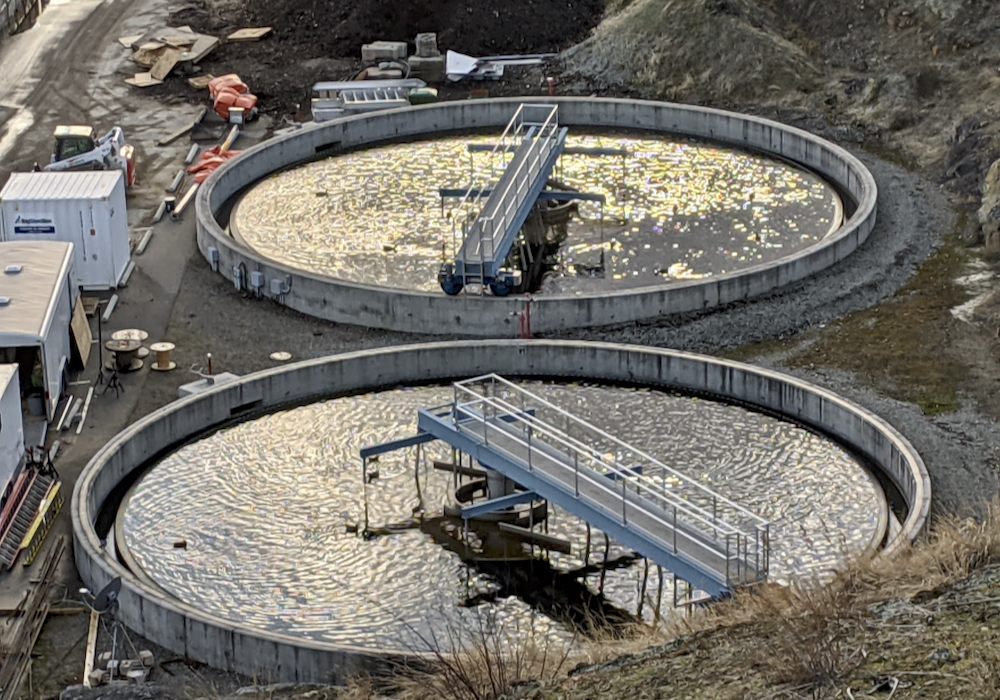The debate over ‘forever chemicals’

The term “forever chemicals” to describe poly/perfluorinated akyl substances (PFAS) does more to alarm than inform.
Read Also
Syngenta Canada adds electric trucks to logistics transportation fleet
Syngenta is the first agricultural company in Canada to add electric trucks to its logistics transportation fleet. The company announced Jan….
That’s the contention of Dr. Scott Mabury, which he provided during the Southwest Agricultural Conference at the University of Guelph’s Ridgetown Campus earlier this month.
Why it matters: PFAS chemicals have generated debate and discussion ranging from demands for on-farm risk assessments to a bipartisan addition to the U.S. Farm Bill.
Mabury is vice-president of operations and real estate partnerships, and vice-provost of academic operations at the University of Toronto. He is also an environmental chemist who spends weekends at his family’s farm in Northumberland County, east of Toronto and is not a fan of the “forever chemicals” moniker adopted by many, including media outlets.
“People fear what they don’t understand and since chemistry is highly technical and often not well understood, it becomes easy to create fear or alarm,” said Mabury. “This is especially true when discussing anything around the production of food.”
PFAS refers to a family of chemicals, among them fluorine that is a common component of many household items including pharmaceuticals, Teflon and firefighting foams. Stain- or water-repellent fabrics, food packaging and agricultural chemicals also contain PFAS.
According to a Government of Canada document on the subject, there are more than 4,700 human-made substances containing PFAS, some dating back to the 1950s.
Agriculture became part of recent debate through its use of land-applied sewage sludge. As Mabury noted, some fluorinated chemicals are extremely persistent but some polyfluorinated chemicals degrade in the environment.
“Many of these degradation products are the highly persistent perfluorinated acids that are widely observed in the environment, including in human blood,” said Mabury.
Last October, a report in the Michigan Advance cited a call from farmers and environmental health advocates for “state and national action on PFAS.” The request came from a coalition of farmers from Michigan, New Mexico and Maine, the latter of which demanded wider testing and monitoring of PFAS levels from agricultural activity.
The drawback on testing is that producers may be expected to cover the costs.
Present or toxic?
Mabury issued his own call for perspective, noting science’s advanced capability to detect chemicals. Forty years ago, pollutants in water were measured in parts per million. Today, labs can test water and soil samples in parts per billion and parts per trillion, and some are even capable of measuring parts per quadrillion.
To put it in terms of time, if one part per million were equal to one second in 11.6 days, then one part per billion would be one second in 32 years, and one part per trillion would be equivalent to one second in 31,709 years.
But just because something can be measured or detected doesn’t make it toxic. Toxicity requires exposure, said Mabury, and the industry has moved to shorter-chained fluorinated materials, which are generally safer.
The most common PFAS pollutants are relatively non-toxic in the short-term, but there appears to be greater concern about long-term exposure.
Mabury noted nature is relatively good at processing many fluorinated chemicals released from consumer and industrial uses. He cited volatile fluorotelomer alcohols found in the atmosphere that escape from stain- and water-repellent materials and can travel great distances, even as far as the Arctic. Ultimately, they degrade in the atmosphere.
In and on the soil
As for the impact of applying biosolids and organic amendments to farmland, Mabury contends they meet crop needs and improve soil health and do not pose serious risks. In May 2023, the Canadian Food Inspection Agency proposed an interim standard requiring that biosolids contain less than 50 parts per billion of perfluoro octane sulfonic acid (PFOS).
Testing by government and industry indicated more than 90 per cent of Canadian biosolids contain less than that, which Mabury cited as “one of the most extensively produced, studied and measured” components.
In tests of various materials, levels of PFAS were far below the 50 ppb threshold. Municipal compost (sewage sludge) contained 0.75 ppb and beef manure tested below the lowest concentration to be quantified (0.33 ppb).
“The municipal compost (sewage sludge at 50 per cent dry matter) was applied at 10 ton per acre,” said Mabury. “Since there are no established safe soil concentrations, at 0.75 ppb, it would require about 1,280 ton per acre, or 2,570 ton, as applied, for the average background concentration to double.
“In a six-inch soil profile, PFAS ranged from 0.00004 to 0.0038 lb./ac. in background soils sampled across North America.”
The addition of 10 tons of compost used in Mabury’s example would add 0.0000075 lb./ac.
Source: Farmtario.com

